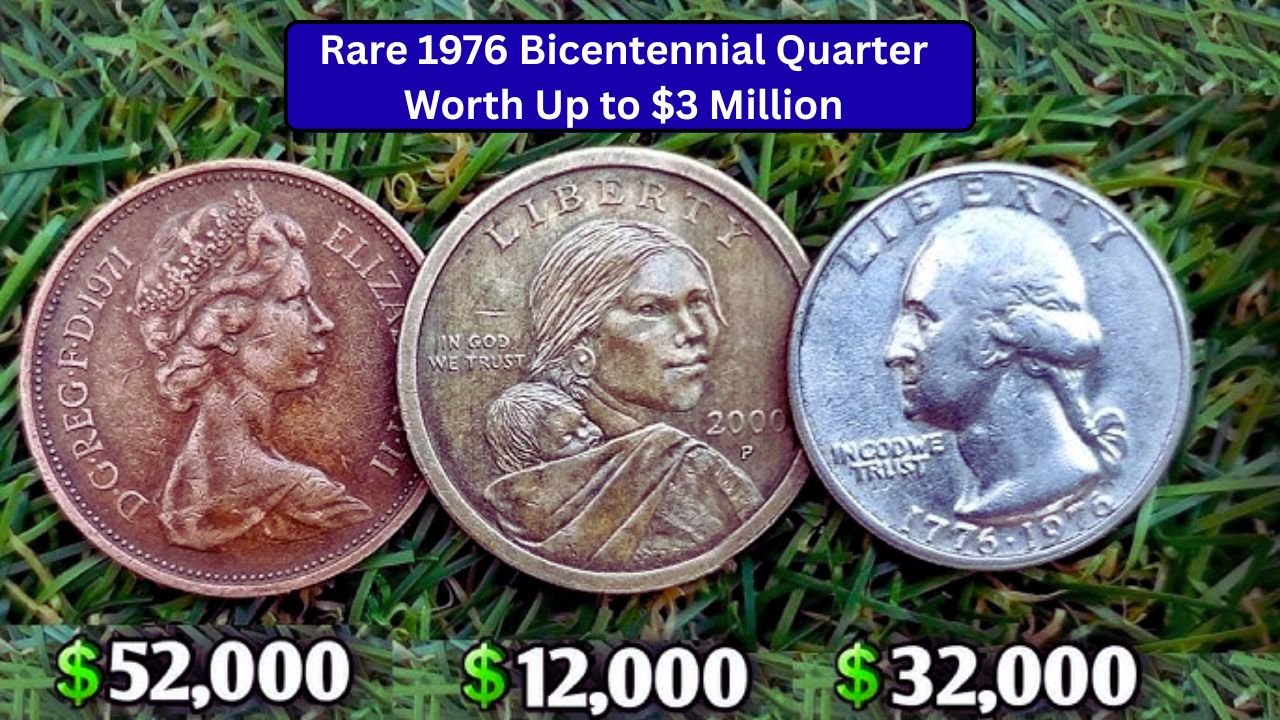In 1976, the United States celebrated its 200th birthday with a big party, and the U.S. Mint joined in by making a special coin called the Bicentennial Quarter. This quarter has a unique design with a colonial drummer on the back and the dates 1776-1976 on the front. While millions of these coins were made and most are worth just 25 cents, some rare ones can be worth up to $3 million because of mistakes made during minting or special features. If you have a jar of old coins or some spare change, you might be holding a fortune without knowing it. Here’s a simple guide to help you find one of these valuable treasures.
Look for the Special Design
The Bicentennial Quarter is easy to spot because it looks different from regular quarters. The front has George Washington’s face, like other quarters, but it shows the dual dates 1776-1976. The back has a colonial drummer and a torch with 13 stars around it, standing for the original 13 colonies. Most of these quarters were made in Philadelphia or Denver, but some special ones came from San Francisco with an “S” mint mark. These San Francisco coins, especially those made with 40% silver, are often more valuable. Check your coins for these details to start your hunt.
Check for Minting Errors
Some Bicentennial Quarters are worth a lot because of mistakes made when they were created. For example, a double die error happens when the coin’s design is stamped twice, making the date or letters look blurry. Another error is an off-center strike, where the design is not lined up properly and part of it is cut off. Some quarters were even struck on the wrong metal, like a dime’s planchet or silver instead of the usual copper-nickel mix. These errors make the coins rare, and collectors are willing to pay big money for them. One famous example is a 1976-D quarter missing its clad layer, showing a copper core, valued at up to $3 million.
| Error Type | Description | Potential Value |
|---|---|---|
| Double Die | Blurry date or letters from double stamping | Up to $2 million |
| Off-Center Strike | Misaligned design, part off the edge | Up to $5 million |
Spotting Silver Quarters
Not all Bicentennial Quarters are made the same. Most are clad, meaning they’re a mix of copper, nickel, and zinc. But some, especially from San Francisco, are 40% silver and have a shinier, more golden look. You can tell by checking the edge of the coin. A silver quarter will look solid silver, while a clad one will show a copper stripe. Silver quarters in great condition, especially those graded PR-70 (perfect) by experts like PCGS or NGC, can sell for thousands or even millions. For example, a 1976-S silver proof quarter sold for $19,200 at auction.
| Coin Type | Material | Edge Appearance |
|---|---|---|
| Clad | Copper-nickel | Copper stripe |
| Silver | 40% silver | Solid silver |
Where to Look and What to Do
You don’t need to be a coin expert to find a rare Bicentennial Quarter. Start by checking your spare change, old piggy banks, or family heirlooms. Coin shops, flea markets, or even vending machine change might hold a treasure. If you find a quarter that looks odd, like it has a blurry design or strange color, don’t clean it. Cleaning can lower its value. Instead, take it to a professional coin grader like PCGS or NGC to check if it’s valuable. With millions of these quarters still out there, you could get lucky.
Why These Coins Are So Special
The excitement around rare Bicentennial Quarters is growing as the U.S. gets closer to its 250th anniversary in 2026. These coins are not just money but pieces of American history, tied to the nation’s 200th birthday. Stories of people finding valuable coins in their change have made everyone curious, and auction houses are seeing record-breaking bids. Whether you’re a collector or just someone with some old coins, now is a great time to look through your quarters. Grab a magnifying glass, check for errors or silver, and you might find a coin worth millions hiding in plain sight.
